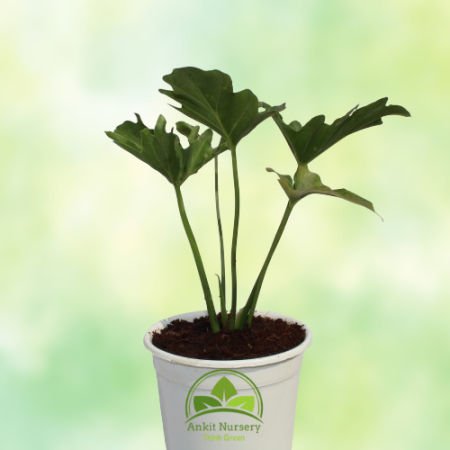
- -10%






Philodendron xanadu Seelam Plant is indeed a delightful cultivar known for its lush and tropical appearance. Philodendron xanadu Seelam is characterized by its large, deeply lobed, glossy green leaves that radiate from a central point. The foliage forms a dense, compact clump, creating a lush and tropical look. Philodendron xanadu typically grows to a moderate size, reaching heights of around 2 to 4 feet and a similar spread. It's a great choice for indoor spaces or as a landscaping plant in mild climates.
Philodendron xanadu Seelam Plant thrives in bright, indirect light. While it can tolerate lower light conditions, it may grow more slowly and produce fewer leaves. Avoid direct sunlight, as it can scorch the leaves.
Keep the soil consistently moist but not waterlogged. Water the plant when the top inch of soil feels dry to the touch, and allow any excess water to drain away. Overwatering can lead to root rot, so it's essential to ensure proper drainage.
Philodendron xanadu Seelam Plant prefers temperatures between 65-80°F (18-27°C) and moderate to high humidity levels. It can tolerate average indoor humidity but may benefit from occasional misting or placement near a humidifier, especially in dry indoor environments.
Use a well-draining potting mix rich in organic matter, such as peat moss or compost. A mix formulated for houseplants or tropical plants works well for Philodendron xanadu.
Feed your Philodendron xanadu Seelam with a balanced liquid fertilizer diluted to half strength every 4-6 weeks during the growing season (spring and summer). Reduce fertilization in fall and winter when growth slows. Philodendron xanadu can be propagated from stem cuttings. Take a cutting with several nodes, remove the lower leaves, and place it in a pot with moist potting mix. Keep the soil consistently moist until roots develop.
Prune Philodendron xanadu Seelam Plant to control their size and shape and remove any dead or yellowing leaves. Regular pruning can help maintain a tidy appearance and encourage bushier growth.
Philodendron xanadu Seelam Plant contains calcium oxalate crystals, which can be toxic if ingested. Keep it out of reach of children and pets, and wash your hands after handling the plant to avoid skin irritation. Philodendron xanadu is a stunning and relatively low-maintenance plant that can brighten up any indoor or outdoor space with its vibrant foliage. With proper care, it can thrive and bring joy for many years.
Spider Plant (Chlorophytum) scientifically known as Chlorophytum comosum, are popular...
The term "Silver Yucca" is commonly used to refer to a variety of yucca plants with silvery or...
"Chlorophytum" plant, commonly known as the Spider Plant. Chlorophytum comosum, or Spider...
The term "Syngonium Golden" likely refers to a variety of Syngonium plant with golden or...
Rubber Plant - White Pot is a popular and attractive houseplant known for its glossy, deep...
"Golden Song of India" is a common name for the Dracaena reflexa 'Variegata' plant, also known...
Croton Petra, also known as Codiaeum variegatum 'Petra,' is a popular cultivar of the Croton...
The Snake Plant, scientifically known as Sansevieria trifasciata (formerly classified under...
The Dwarf Snake Plant, scientifically known as Sansevieria trifasciata, is a compact variety...
Red Dracaena, also known as Dracaena marginata or Dragon Tree, is a popular houseplant that...
The term "Pink Syngonium" typically refers to a variety of Syngonium podophyllum, commonly...
Pedilanthus tithymaloides, commonly known as Devil's Backbone or Redbird Cactus, is a species...
Thalia dealbata, commonly known as the Hardy Water Canna. Thalia dealbata is known for its...
Water plants, also known as aquatic plants or hydrophytes, are plants that have adapted to...
Syngonium Pink is a popular indoor plant known for its attractive foliage. It is a variety of...
Syngonium podophyllum, commonly known as Syngonium or Arrowhead Vine, is a popular indoor...